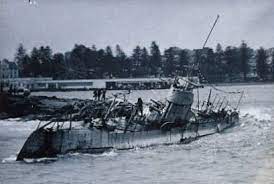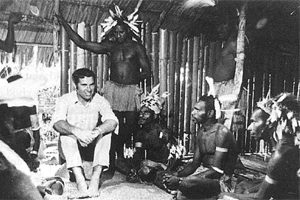The collapse of the Netherlands under German occupation in May 1940 left its overseas empire, particularly the Netherlands East Indies (NEI), to operate with significant autonomy. Based in Batavia, the colonial administration continued to govern its territories while the Dutch government-in-exile established itself in London. As the war progressed, tensions grew between these two centres of Dutch authority. Their differing strategic priorities, communication failures, and contrasting political outlooks complicated cooperation not only within Dutch circles but also with Allied partners, especially Australia.
Governor-General Tjarda van Starkenborgh Stachouwer led the NEI administration with relative independence, coordinating economic and defence matters while balancing relations with Britain, Australia, and the United States. The NEI declared war on Japan immediately after the attack on Pearl Harbor—without awaiting instructions from London—illustrating how far Batavia had diverged from central government control.
As the Japanese invasion advanced and NEI officials evacuated to Australia, the internal Dutch political divide became impossible to ignore. Lieutenant Governor-General Hubertus van Mook arrived in Australia with other high-level NEI personnel in early March 1942. Almost immediately, he began setting up what would become the Netherlands East Indies Commission for Australia and New Zealand, the first step toward a functioning government-in-exile. This sparked concern in London.
The Gerbrandy government viewed Van Mook and his associates—many of whom, including his deputy Charles van der Plas, had been born and raised in the Indies—as part of an “Indies Group” whose reformist leanings were suspect. According to Jack Ford, the Dutch government-in-exile in London had no intention of allowing a semi-autonomous NEI government to take root in Australia. Van Mook’s statements advocating for Indonesian representation in a future imperial parliament and for an end to Dutch colonial domination were seen by Prime Minister Pieter Sjoerds Gerbrandy as a “cardinal threat to the existence of the [Netherlands] nation”.
As early as 25 March 1942, Van Mook was recalled to London and discharged from his role as Lieutenant-Governor. He was instead appointed Minister for the Colonies, but this was largely a ceremonial role, with limited power and a clear directive: to uphold imperial unity and ensure the NEI remained tightly bound to the Netherlands. Gerbrandy instructed Van Mook to pursue a policy in which “the Indies maintains its imperial links” and should never “stand on its own”.
This conflict over future direction wasn’t merely theoretical. The Dutch government-in-exile sought to maintain full central control over foreign affairs, including NEI relations with Australia. But Van Mook and his allies had already begun establishing direct ties with Australian officials. Before departing, Van Mook had created the NEI Commission under Van Hoogstraten, with a mandate to oversee Dutch civilian and military interests in Australia. Although technically subordinate to the Dutch ambassador, Baron van Aerssen Beyeren, the Commission quickly assumed day-to-day authority for NEI matters.
Australian officials struggled with this ambiguity. Jack Ford notes that Australia had little diplomatic experience of its own before the war and had never dealt with hosting a foreign government-in-exile. Its attempts to engage with Dutch representatives were often met with conflicting signals from Batavia and London. Australia’s External Affairs department was repeatedly unsure who spoke for the Netherlands.
R. W. A. van den Berg, in Unchained Interests, argues that the problem was rooted in the constitutional design of the Dutch kingdom, which offered little precedent for this kind of power-sharing between the centre and colony. The Gerbrandy government’s fixation on restoring the Netherlands as a unitary sovereign power clashed with the decentralised reality of Dutch wartime administration.
The war, in effect, exposed the diplomatic underdevelopment of both countries. Prior to 1941, neither the NEI nor Australia maintained significant diplomatic representation in each other’s territories. Most communications were routed through London or The Hague. The fall of the NEI and the shift in Australian foreign policy in response to Japan’s rise forced both governments to reconfigure how they worked with one another—and highlighted the costs of entering a major regional conflict without direct political ties.
Australia also witnessed how the fractured Dutch leadership could hinder the Allied cause. The split between the London Dutch and the Indies Dutch—exacerbated by personality clashes, colonial ideology, and geopolitical anxiety—played out in Canberra and Melbourne as Van Mook’s camp and the ambassador’s office often operated on parallel tracks. The Americans and British, too, were quick to exploit this fragmentation when it suited their interests.
Despite these tensions, Dutch ships were already involved in the war effort as early as late March, only weeks after they arrived. Hubertus van Mook would return to Australia in 1944 to lead the formal NEI government-in-exile.
This article is part of a six-part series on Dutch–Australian wartime cooperation. For related perspectives, see:
- Between secrecy and survival: Australia’s frustration with Dutch neutrality on the eve of war.
- Reform or restoration? Political tensions over the future of the Netherlands East Indies during wartime exile.
- Wartime reform and Indonesian voices: Dutch–Indonesian political tensions in exile.
- The Dutch purchasing mission and wartime supply issues in Australia.
- From indifference to diplomacy: how the war transformed Dutch–Australian foreign relations
- A Dutch military and civil inventory in Australia – March 1942 snapshot
References: Jack Ford, Allies in a Bind: Australia and the Netherlands East Indies in the Second World War, CQU Press, 2001
R. W. A. van den Berg, Unchained Interests, Netherlands Staff College Monograph, 2021


